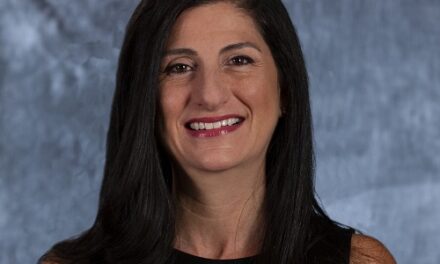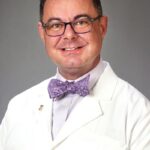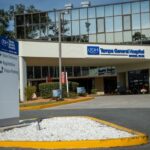 One paragraph in my medical textbook, that’s all I remember about scleroderma. In my 30-year nursing career, I had never come across it, until my daughter was diagnosed, at 23 years old. Scleroderma is Greek for hard skin. It is an autoimmune disease in which the body produces too much collagen. Since collagen is naturally the most prominent and strongest protein in our body, an overabundance of it can wreak havoc on the skin and internal organs.
One paragraph in my medical textbook, that’s all I remember about scleroderma. In my 30-year nursing career, I had never come across it, until my daughter was diagnosed, at 23 years old. Scleroderma is Greek for hard skin. It is an autoimmune disease in which the body produces too much collagen. Since collagen is naturally the most prominent and strongest protein in our body, an overabundance of it can wreak havoc on the skin and internal organs.
She’s always been prone to a weakened immune system, suffering asthma, eczema, and allergies from the age of 2. Half her childhood was spent in the hospital, mostly for infected eczema. Strong IV antibiotics, like Vancomycin, were pumped into her system as she scribbled answers across her fourth grade homework. The infections got so bad at one point, she even contracted MRSA in her eye. Regardless of all the missed school, she excelled at reading and writing; placing Honors throughout high school. By then we were so relieved because she had outgrown her eczema and asthma problems, until she began experiencing odd symptoms at the age of 20.
It all started with a white patch behind her ear. She came up to me and asked me if I knew what it was and I guessed vitiligo. She also started to experience numbness and swelling in her hands, along with joint pain. Luckily she was diagnosed early by our family rheumatologist. He pinched her skin and noted that it was thick, which led him to test for the specific SCL-70 disease marker, and it came back positive. She started taking immunosuppressants and vasodilators to slow down the disease and help with blood flow.
Scleroderma has completely taken over her immune system these past seven years, tightening her soft skin to tight leather. Skin ulcers, body pain, heartburn and joint stiffness are the main symptoms she suffers from today. My experience in the field has given me a gentle hand for administering at-home injections. If she has a terrible ulcer, I’m able to wrap and clean it with precision. I wash her hair, cut her food, help her get dressed, and anything else with which she needs assistance. Looking back, we never thought it would get to this point, but this experience has changed everyone for the better; including her.
The hardest part of all is that I can administer medications to sick patients, heal them, and discharge them home, but I can’t make my own daughter better. Despite all she’s going through, she continues to inspire me with her strength and resilience. She speaks openly to the public about her journey and encourages other patients to persevere. Every year we attend the Scleroderma 5K Walk, to support the research for a cure. There is no cure as of today, so she will be my lifetime patient, and I wouldn’t have it any other way.


























